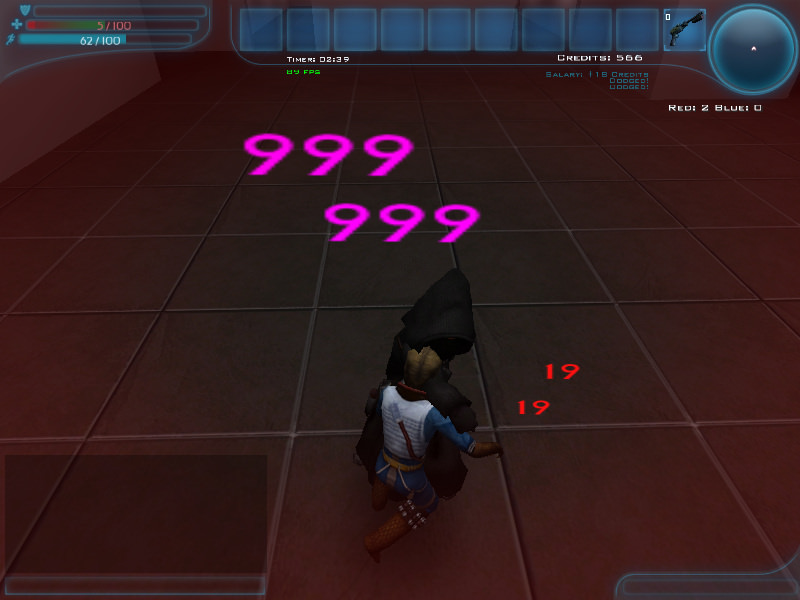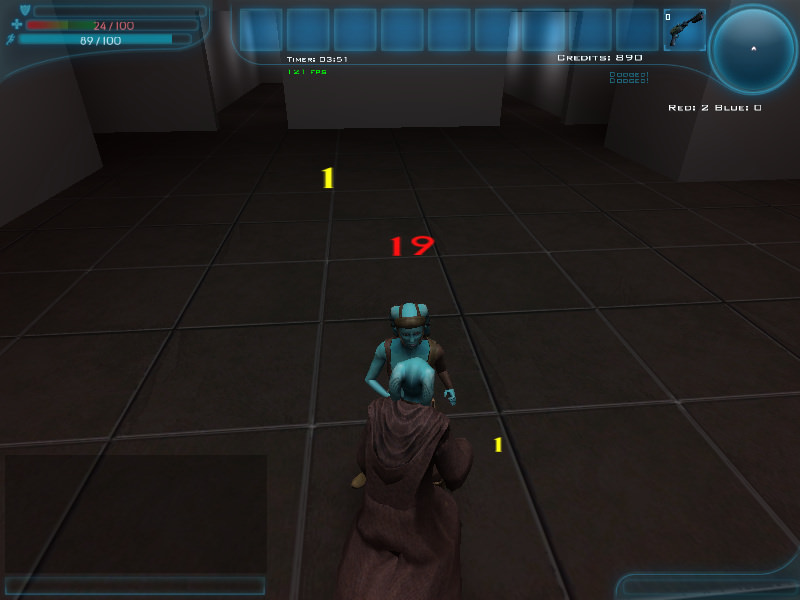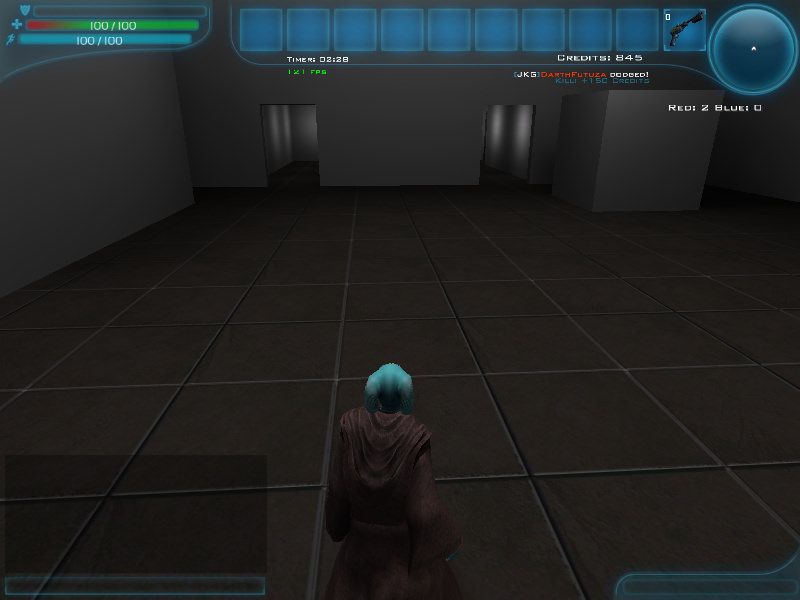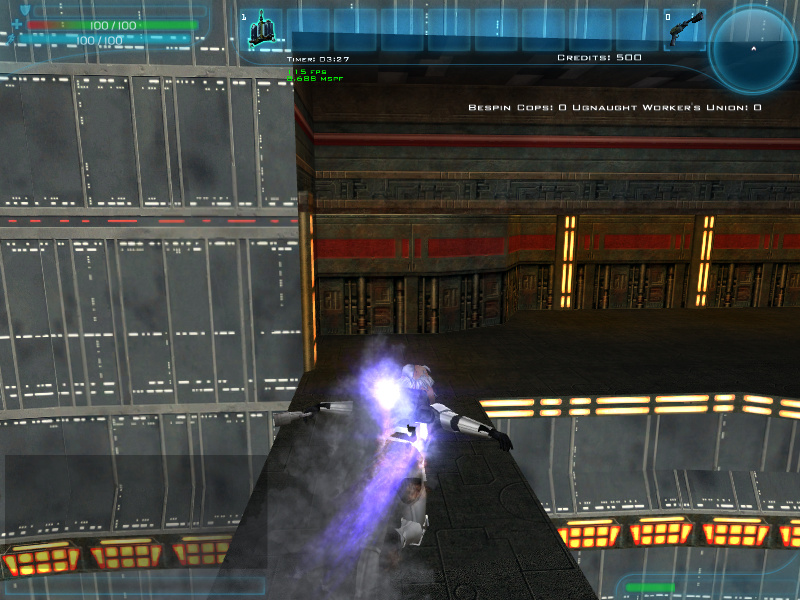-
Posts
1,912 -
Joined
-
Last visited
Content Type
News Articles
Tutorials
Forums
Downloads
Posts posted by Futuza
-
-
Found a slight bug and patched it, you'll need the updated version of the binaries (the windows binaries have been updated to v1.3.19b(develop) just click on the link in the initial post).
Smoo likes this -
I added the Windows Binaries, (just update from v1.3.18). I'll see if I can do linux sometime tomorrow before the match.
Smoo likes this -
Hello everyone! Its been a while since we've hosted a community event so we wanted to do something. There've only been a few changes lately unfortunately due to the developers pretty limited schedules this season, but we thought it might be fun to test the new version and have some fun while we're at it. We're planning on doing a match this Sunday Morning(12:00AM UTC time), click here to view the count down.
We're still working on some last minute changes,
but we'll put the download links up here on this initial post as soon as they're readywindows binaries are available! Feel free to drop a comment if you're planning on coming, the more the merrier! Let us know if you have any map requests or game mode ideas as well. If you need to install JKG from scratch, just install v1.3.18 first and then patch using the binaries below. You will also want to grab the map pack if you don't already have it.Please note you need v1.3.18 installed before patching.
Windows Binaries (updated: 3/30/2019)
WinXP Binaries(updated: 3/30/2019not working yet)(Linux not available yet)
Smoo likes this -
Oh goodie I think I have something I can submit for this.
Smoo likes this -
Once again JKA is less than $4 for Steam Winter Sale.
https://store.steampowered.com/app/6020/STAR_WARS_Jedi_Knight__Jedi_Academy/
Bek likes this -
Couple of things you can try in order of difficulty:
- Play with all of the settings listed on this page (don't necessarily follow their recommendations though, you'll want the bare bone configuration). Do the obvious stuff first such as reducing your resolution to 800x600 or smaller, disabling dynamic glow (r_dynamicglow 0), etc.
- Overclock your raspberry pi, you can likely get more performance than a mere 1.4ghz for example if you use liquid cooling - however keep in mind that the chips are not designed to be overclocked and doing so will mostly likely ruin the pi especially if you don't have experience with overclocking. See this for some ideas of how to get started.
- Replace all of JKA's textures with half size textures or smaller. eg: open up all the 512x512 textures and scale them down to 256x256, etc.
- Recreate all the maps without a lightmap stage, etc.
- Create a type of headless client by making the game simply not render anything at all. Then close your eyes when you play and imagine what should be displayed for infinite fps.
- Improve the openjk source code to take advantage of multiprocessing on different cores and upload it on github for everyone's benefit. I believe ioquake3 has done some work in this regard, you might start there. Also optimizing the renderer by removing cruft and improving some of the techniques used by the game to render things. eg: The way the game renders scoreboards (when you press tab) is atrocious and could definitely be improved. Please note that opengl2 es2 has issues and isn't implemented properly, thus Raspberry Pi's do not technically meet the games minimum requirements.
-
As a note, the launcher assumes you have a copy of your base folder in the "GameData" folder, you'll need to manually copy and paste the base folder wherever you end up installing the launcher to get the game to work.The above issue has been patched and fixed. Get the new version.
-
-
As Noodle mentions, the idea is that we want you to contribute to JKHub first before just taking without giving back. There have been far too many people that get on with an expectancy of being able to request difficult and hard-to-do requests and actually get a response, and to make matters worse they've shown no willingness to learn or contribute or that they've even attempted to try to do their own request first. This helps curtail those spam-like requests that really just annoy most of us long time modders more than make us interested in contributing to your request.
-
maybe i'll be tracer?
Has anybody ripped Overwatch models and ported them to JKA yet? Cause otherwise I can't reply properly to this.
the_raven and Revolution like this -
Link has been updated, thank you for pointing out it was out of date! I'm sure a fair few people have tried clicking it to their disappointment by now (it was supposed to be set to permanent, discord must have made a mistake somewhere).
*Disney conspiracy theories intensify*
-
@@Darth Futuza ...why not just create a StarTrek-like Bacta Hypo-spray injection. Then just create a stabbing animation of applying it to yourself or others?
It already exists in game. It just doesn't have a stabbing animation to go with it.
-
We see what you see. The owners probably bought the domain but didn't have a use for it.
More like they bought it for the sole purpose of domain squatting and hoping they could resell it at a high value to you
 the_raven likes this
the_raven likes this -
-
-
-
Hosting test matches for v1.3.18 today. The server is up and running, feel free to try in the meantime and play a match on your own terms.
We'll be holding 3 matches tomorrow (20th of October 2018) at :
UTC 6:30pm - 7pmUTC 9:30pm-10pmSunday UTC 2:30am-3:00am
EDIT: Thanks for the matches everyone!
Smoo likes this -
Where is this modding license you speak of? I've actually never seen such a thing, though people speak of it a lot.
Apeiron actually flaunted themselves as a mod of KOTOR, but is it really a mod when you're using an entirely new engine and assets? It's was basically a new game at that point.
Nobody is protected against a C&D though. Technically they can send a C&D for something as trivial as someone painting the Star Wars logo on a bedroom wall.
Stuff like this, but looking into it more, looks like KoToR never had anything like that as far as I can tell, so maybe not - I never got into modding KoToR so I'm not an expert on it.
-
Part of the problem is they flaunted themselves as a new game rather than as merely a MOD for KOTOR, which would remove what little protection they would have from under a KOTOR modding license.
As a Star Wars fan, it's sad to see fan-made projects put down. But as a copyright holder myself, I can't help but side with Lucasfilm on the whole thing.
Some of their stuff was BS though, especially the bit about demanding to destroy all the code. The code has nothing to do with the intellectual property of Star Wars (unless it used clearly violating terms such as "Jedi" or "Star Wars") and could easily be rebranded and worked into a new IP without violating IP, Disney's lawyers went too far with that demand and are not in the right with such claims in my view, especially given that it isn't necessary to protect their property and is a real dick move.
In theory, JKHub and JKA modders in general should be protected in most cases provided they follow the original licensing terms provided by the game for modding, but Disney owns the rights now and can change them to whatever they want and I doubt any of us are rich enough (or care enough) to try and fight them in court should they decide that modding any Star Wars game is illegal.
TheWhitePhoenix likes this -
Like Jedi Knight Galaxies?

-
Dang this just looks better and better

-
So, how was the contest?
I dunno exactly, but here's some of the videos: https://www.youtube.com/channel/UCPbujntnje6dWX98mR3DIpQ/videos
-
-








April Fool's Mod Contest
in News
Posted
Not quite, besides I didn't make those XD